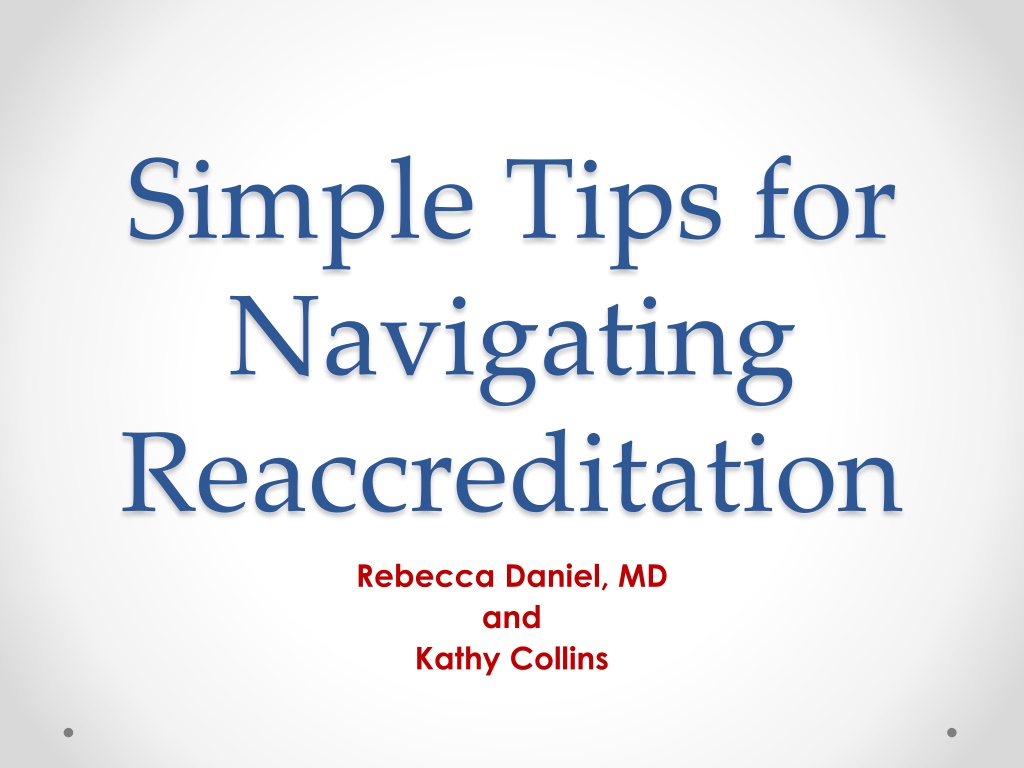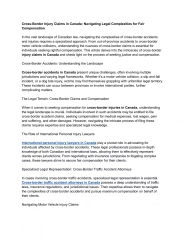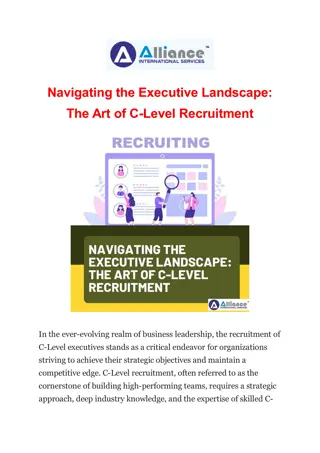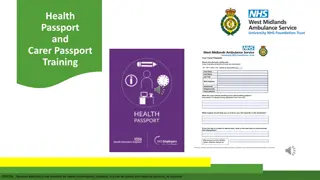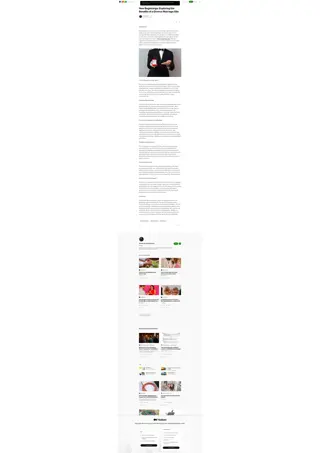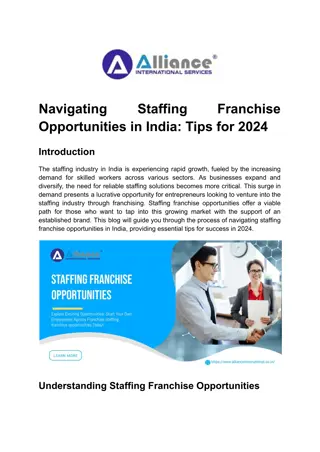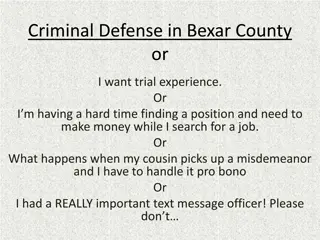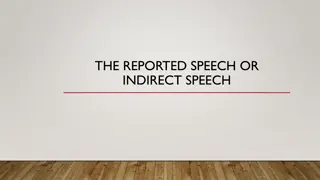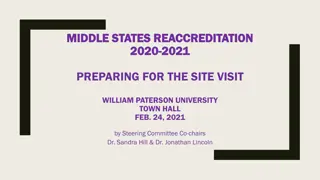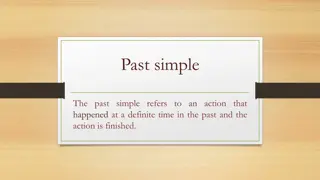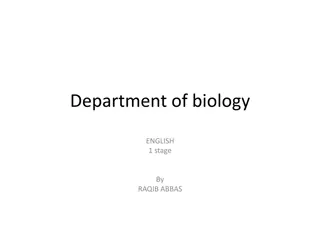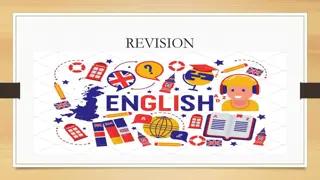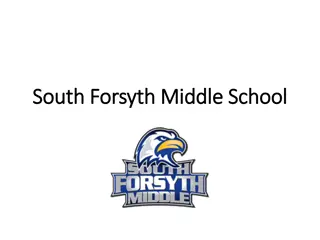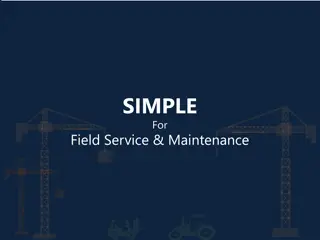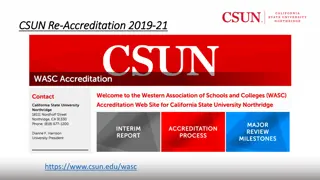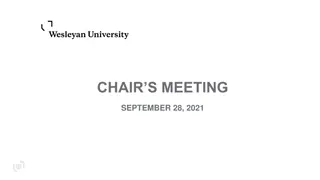Simple Tips for Navigating Reaccreditation
Tips and strategies to simplify the reaccreditation process, identify team coordination approaches, and organize documentation. Learn about equivalency markers and how to streamline decision-making. Discover valuable insights for approaching reaccreditation efficiently and effectively.
Download Presentation

Please find below an Image/Link to download the presentation.
The content on the website is provided AS IS for your information and personal use only. It may not be sold, licensed, or shared on other websites without obtaining consent from the author.If you encounter any issues during the download, it is possible that the publisher has removed the file from their server.
You are allowed to download the files provided on this website for personal or commercial use, subject to the condition that they are used lawfully. All files are the property of their respective owners.
The content on the website is provided AS IS for your information and personal use only. It may not be sold, licensed, or shared on other websites without obtaining consent from the author.
E N D
Presentation Transcript
Simple Tips for Navigating Reaccreditation Rebecca Daniel, MD and Kathy Collins
Disclosures The following planners/presenters have no relevant financial relationships to disclose: Rebecca Daniel, MD CME Director, St. Joseph Mercy Health System Ann Arbor Kathy Collins CME Specialist, Office of CME, Michigan State University College of Human Medicine East Lansing
Speakers below provided us permission to use their slides The following planners/presenters have no relevant financial relationships to disclose: Sandy C. Deeba CME Manager, Oklahoma State Medical Association, Oklahoma City, Oklahoma Casey Harrison, MBA Director, Continuing Medical Education, Texas Medical Association, Austin, Texas Debbie Platek, MSC Assistant Director, Education, Accreditation and Licensure, Illinois State Medical Society, Chicago, Illinois Melissa Carter, M.A. Senior Vice President of Education & Membership, Florida Medical Association, Tallahassee, Florida Dion A. Richetti, DC Vice President for Accreditation and Recognition, ACCME, Chicago, Illinois Frank C. Berry, CCMEP Director, Division of Continuing Professional Development, MedChi, The Maryland State Medical Society, Baltimore, Maryland
Objectives Identify strategies to make reaccreditation simple and streamlined Identify & coordinate your team to approach reaccreditation process Formulate overall plan to approach reaccreditation Organize materials for activity file reviews & self- study documentation
Equivalency The ACCME s 2008 Markers of Equivalency are 1. Equivalency of Rules 2. Equivalency of Process 3. Equivalency of Interpretation 4. Equivalency of Accreditation Outcome 5. Equivalency of Evolution/Process Improvement
Equivalency(WHAT, WHY, WHO?) What-Markers of Equivalency Who-Created by a collaboration: o Recognized Accreditors & ACCME s Advisory Committee on Equivalency(state medical society leaders). Why-Purpose: ensure equivalency of accreditation decision-making across the national system, and streamline and strengthen the recognition process. The Markers, create a system where: ACCME = Recognized Accreditors of the State Medical Societies
Tips for Reaccreditation o Time Management o Materials and Documentation o Your Process o Your Self Study o The Interview o Communications o Education and Training
Time Management o Start Early Establish a timeline for self-study-adhere to it! Contact the Accreditor Review Accreditor requirements http://www.msms.org/Education/CMEFormsLibrary.aspx Read the guidance documents as soon as they are available Once activity files identified-compile documentation Respond to Accreditor regarding intent to pursue accreditation Ensure all activities are entered into PARS
Time Management Establish dates for survey/interview and method o Phone teleconference o Site visit o Reverse site visit Use your calendar o Enter deadlines with action plans and responsible members of the staff o Make sure to account for vacation time, maternity, etc How can you put these into practice within your organization?
Materials & Documentation 1. Develop Strategy 2. Who will be involved? 3. Compiling the evidence of performance in practice (Criteria labels or structured abstract) 4. Writing the Self Study Report *Store documentation in manner you would for accreditation Keep activity Check list in each file Keep central copies of files-files are all labeled Ensure all disclosures include spouse /partner Ensure correct definition of commercial interest Update all of your accreditation and designation statements-but don t alter previous documents
Materials & Documentation Keep a file for evidence of Commendation Criteria o Prior to beginning your Self-Study, pick your top 2 CME activities o Collect materials for C16-C22 in a folder or document in a spreadsheet throughout the accreditation period. o Only include the necessary documentation in your performance in practice file. How can you apply these tips to your organization?
Your Process Involve the whole team o Don t just use the CME director, chair or staff person for interviews o Prep those involved and make sure they have a copy of the activity files Divide tasks o Assign coordinator(s) portion(s) of the self- study/performance in practice files Involve other staff o CME Committee members to draft content for the self-study report or review the material
Your Process Engage an outside reviewer to: 1) Review for completeness 2) Mock questions/use questions as per criterion/survey tool o Reviewer shouldn t be involved in planning activities o Assess potential conflict of interest o National or State experience-consider both o What are some ways you could integrate these tips into what your organization does?
Your Self Study Tell your CME story Describe your CME example activities so that someone outside of your institution would understand Answer all the questions in the Accreditors outline or application. Select a commercially-supported activity as an example, if available
Your Self Study o Connect your narrative (Self-Study Report) and your evidence o Choose your best examples with that meet compliance o Provide reviewers with context for your evidence of performance-in-practice. o Your evidence of performance-in-practice should also bring to light changes, improvements, or discrepancies in your performance which can then be explained in the Self-Study Report.
Your Self-Study Read the self-study instructions x 3 o Page numbering, table of contents, examples with commendation, not utilizing blank forms Review the surveyor s documentation forms o Performance in practice labels, etc. evidence in your activity file Be both thorough and minimalistic o Submit only what is needed o Do your best to minimize paperwork while ensuring that every area has been addressed Be concise and specific when describing your processes
Your Self Study o Proofread, Proofread, Proofread! o Outside of CME department review for error before submission o Review should not be done by only one person o CME Chair o members of your Committee o Confirm number of copies and upload to USB or CD for submission and a final copy for your program o How will you approach your organization s self study report?
The Interview Designate who and their role-invite the right people Communicate roles to each person involved Each person involved has read through the Self- Study Report Copies of the Performance-in-Practice files on hand and that at least one person is familiar with these CME Committee Chair and Committee review carefully your Self-Study
The Interview Conduct a Mock Survey 1-6 months before your actual site survey Present yourself in the best light Know examples of the great things your organization does. This is of particular importance for showing compliance with the engagement criteria What strategies will you use for your organization s interview?
Communications o Communicate with your accreditor o Ask questions o Upfront with your accreditor/concern about the accreditation process, its better not to guess at the meaning. o Submit on time ( If you need extra time, submit it in writing to get approval by your Accreditor) What steps will you take to ensure that you effectively communicate with your Accreditor?
Education and Training o Contact MSMS for Self-Study Training-in person or via phone, MSMS can provide helpful tips, tools and guidance to the process of Reaccreditation. Check with Brenda Marenich for dates and time available o http://www.msms.org/Education/EducationResources/CME Resources.aspx o Throughout your accreditation term participate in continuing education. MSMS annual CME meeting ACCME Alliance AHME o Keep your staff and committee members trained What educational opportunities are available to you and your organization?
